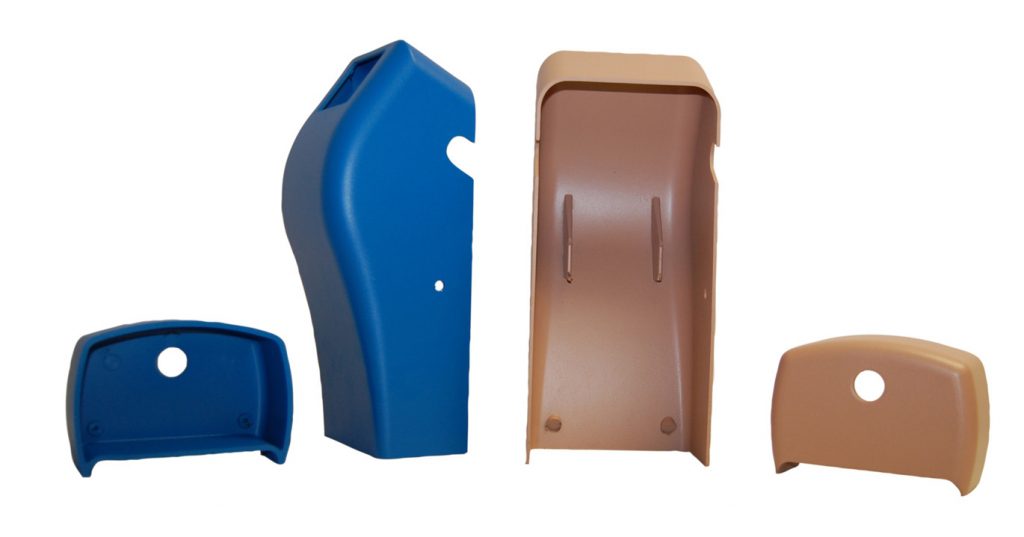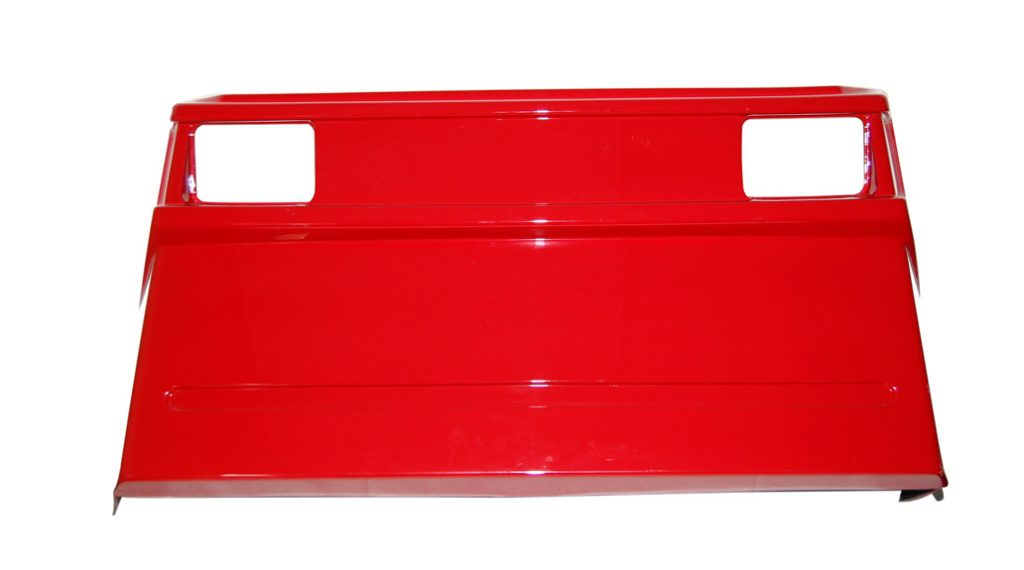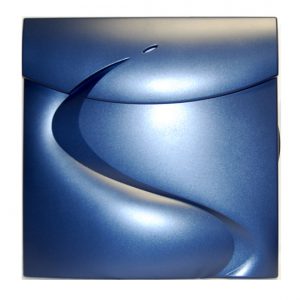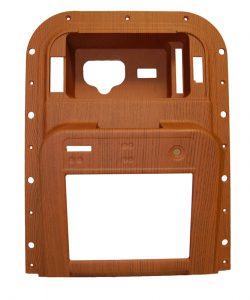Paint Process
A variety of processes for just the right reaction.
RIM Manufacturing offers you a wide range of painting options that give even more to your parts than excellent aesthetics.
Pigmenting and In-Mold Painting – for about 20% of the parts we produce, RIM Manufacturing adds pigment color to the poly component for color throughout the part, or we spray a thin layer of paint onto the mold cavity for the paint to chemically adhere to the part during the exothermic reaction.
Pigmented parts look very good, but this process is only acceptable when paint is not required to cover slight surface imperfections. Parts with a simple surface geometry can be painted in the mold for excellent cosmetics and hiding surface imperfections. However, neither pigmented nor in-mold painted parts have the high-quality finish of post-painted parts.


Toro Tractor Bumper – 48″ x 24″
Post-painting – employed for about 80% of the parts we produce, these processes allow for a greatly enhanced, Class A or Class B cosmetic finish. Gloss and texture can be varied to hide part imperfections when the part is new and, more importantly, to camouflage potential scuffing and marring during use. Generally our painters use Polane Polyurethane Enamel paints for their superior appearance and durability.
Silk screening – this process can produce an excellent look, though it normally adds a day or two to the three to five days that normal painting requires, depending on the number of colors incorporated into design or copy.
Electromagnetic Interference (EMI) shielding – some parts might also require shielding. When that is the case, we use Spraylat 599 Shielding.

Telecom Door – 36″ x 36″

Soft Touch Wood Grain
Automotive Application
Hydrographic print finishes – this process is used to give parts wood grain, metal, carbon fiber, marble, stone, camouflage and other patterns. After a base coat of paint is applied to the part, a polyvinyl film printed with the pattern is floated on a vat of water. An activator chemical is sprayed on the film, dissolving it into a liquid and activating a bonding agent. The part is dipped into the vat for the print to be transferred onto it, and the part is then washed, dried and clear-coated.
